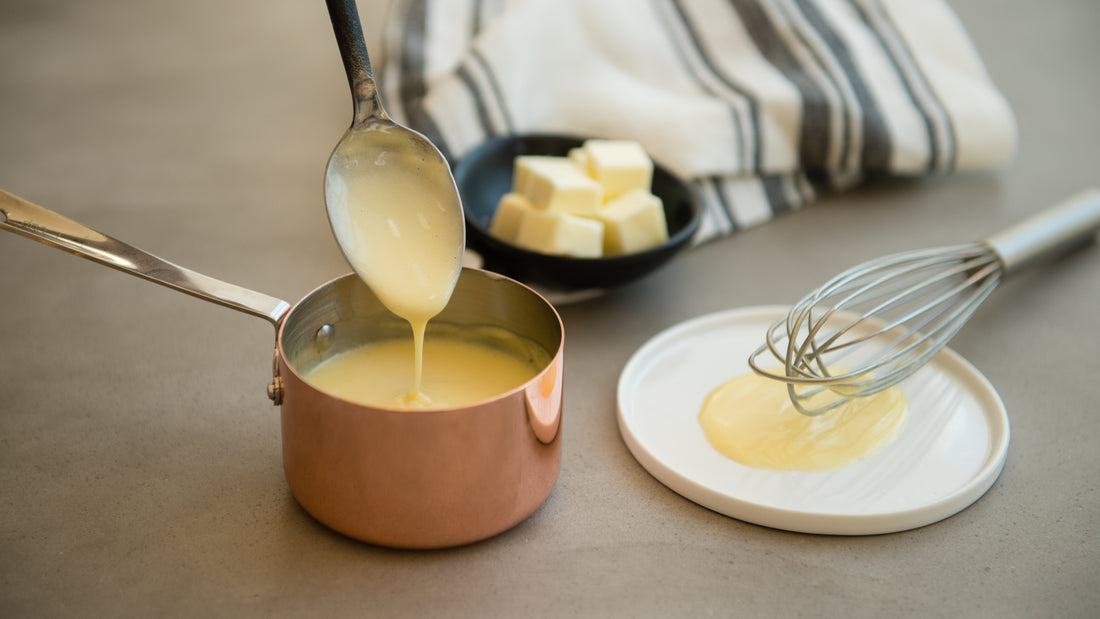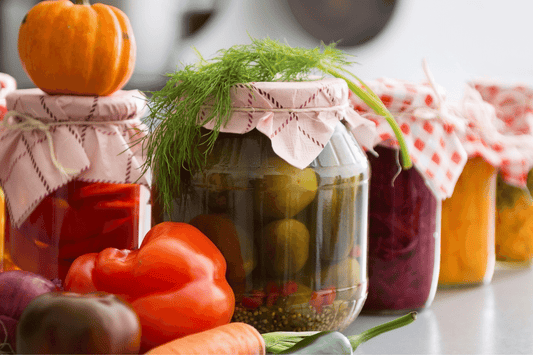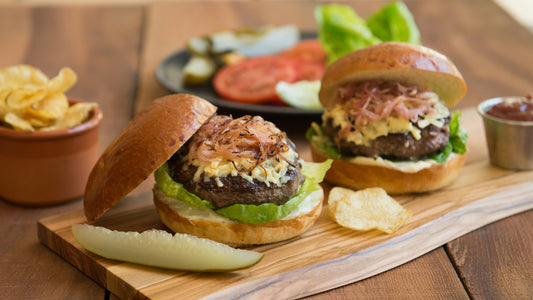You know oil and water don’t mix, but do you know why?
First off, oil and water have very different densities. Water molecules are packed together more densely than oil, so when you add two of them to a container they will naturally separate. Anyone who has made a vinaigrette has seen this separation in action.
Secondly, water molecules are polar, meaning that they have a positive and negative end. Since we all know that positives and negatives attract, this means that water, in general, likes to stick together.
Oil molecules, on the other hand, are nonpolar, so water molecules don’t have much interest in bonding with them. Think of it like a sixth grade dance. You’ve got a tight-knit group of girls and a gang of disinterested boys and nobody seems to be dancing.
But many recipes, from basic vinaigrettes to creamy pan sauces, require that you, essentially, get those kids paired up. How do you defy the laws of science? By creating an emulsion.
https://youtu.be/arwG_MFbTz4
An emulsion is simply the combination of two substances that don’t usually mix. To create an emulsion between oil and water, you can vigorously blend, whisk or shake the two together to break the oil molecules into smaller bits that can be suspended in water. Keep in mind, though, this is only a temporary emulsion, and the two will eventually separate again. To make the emulsion last, you need an emulsifier.
What is an emulsifier?
Emulsifiers are substances that can form bonds with both water and fat so they build a bridge between the two, encapsulating fat droplets and suspending them in water (or vice-versa), giving rise to the dreamy, creamy textures we love. Dijon mustard works as a great emulsifier for vinaigrettes. For things like aioli and mayonnaise, which are an emulsion of egg yolks and oil, the natural
lecithin in the egg yolks keeps the mixture emulsified.
Emulsification in Practice
Emulsification is the basis for some of the best things in food, but it’s not usually as simple as adding the right emulsifier to the mix. To master the art of emulsifying, you have to pay close attention to time and temperature.
Let’s take beurre blanc for example. To make this traditional French butter sauce, you first add cream to a base of sautéed shallots and reduced white wine.

The cream is technically an emulsion already, since cream is really just fat dispersed in water, with naturally occurring lecithin keeping the molecules bonded. But to get the cream to emulsify into the wine in a way that achieves the rich mouthfeel of a French sauce, you need to emulsify the mixture further by whisking in another emulsion — cold butter. This is where temperature and timing are of the essence. The trick is to keep the butter cold, the pan warm (but not too hot!), and the whisk moving quickly.

By gradually adding chilled butter to the mixture while whisking, you help regulate the temperature of the sauce. This allows the butter’s water and fat globules to separate slowly as it melts so that, through the agitation of the whisk, you break the fat into even smaller pieces to emulsify the incompatible liquids. You’ll know the sauce is ready when it has thickened, and you leave a trail when you run a spoon through it.
Emulsions are best served immediately because too much heat or re-heating can break the delicate structure holding them together. The fat will separate away from the water molecules and you’ll have an oily mess.
With the Hestan Cue, we’ve tested and tuned our beurre blanc recipe so the time and temperature are just right. All you have to worry about is the whisking! So now that you’ve got the science down, are you ready to test your skills? Check out one of our favorite pairings for this decadent sauce:
Pan Seared Scallops with Beurre Blanc!
 The cream is technically an emulsion already, since cream is really just fat dispersed in water, with naturally occurring lecithin keeping the molecules bonded. But to get the cream to emulsify into the wine in a way that achieves the rich mouthfeel of a French sauce, you need to emulsify the mixture further by whisking in another emulsion — cold butter. This is where temperature and timing are of the essence. The trick is to keep the butter cold, the pan warm (but not too hot!), and the whisk moving quickly.
The cream is technically an emulsion already, since cream is really just fat dispersed in water, with naturally occurring lecithin keeping the molecules bonded. But to get the cream to emulsify into the wine in a way that achieves the rich mouthfeel of a French sauce, you need to emulsify the mixture further by whisking in another emulsion — cold butter. This is where temperature and timing are of the essence. The trick is to keep the butter cold, the pan warm (but not too hot!), and the whisk moving quickly.
 By gradually adding chilled butter to the mixture while whisking, you help regulate the temperature of the sauce. This allows the butter’s water and fat globules to separate slowly as it melts so that, through the agitation of the whisk, you break the fat into even smaller pieces to emulsify the incompatible liquids. You’ll know the sauce is ready when it has thickened, and you leave a trail when you run a spoon through it.
Emulsions are best served immediately because too much heat or re-heating can break the delicate structure holding them together. The fat will separate away from the water molecules and you’ll have an oily mess.
With the Hestan Cue, we’ve tested and tuned our beurre blanc recipe so the time and temperature are just right. All you have to worry about is the whisking! So now that you’ve got the science down, are you ready to test your skills? Check out one of our favorite pairings for this decadent sauce: Pan Seared Scallops with Beurre Blanc!
By gradually adding chilled butter to the mixture while whisking, you help regulate the temperature of the sauce. This allows the butter’s water and fat globules to separate slowly as it melts so that, through the agitation of the whisk, you break the fat into even smaller pieces to emulsify the incompatible liquids. You’ll know the sauce is ready when it has thickened, and you leave a trail when you run a spoon through it.
Emulsions are best served immediately because too much heat or re-heating can break the delicate structure holding them together. The fat will separate away from the water molecules and you’ll have an oily mess.
With the Hestan Cue, we’ve tested and tuned our beurre blanc recipe so the time and temperature are just right. All you have to worry about is the whisking! So now that you’ve got the science down, are you ready to test your skills? Check out one of our favorite pairings for this decadent sauce: Pan Seared Scallops with Beurre Blanc!




